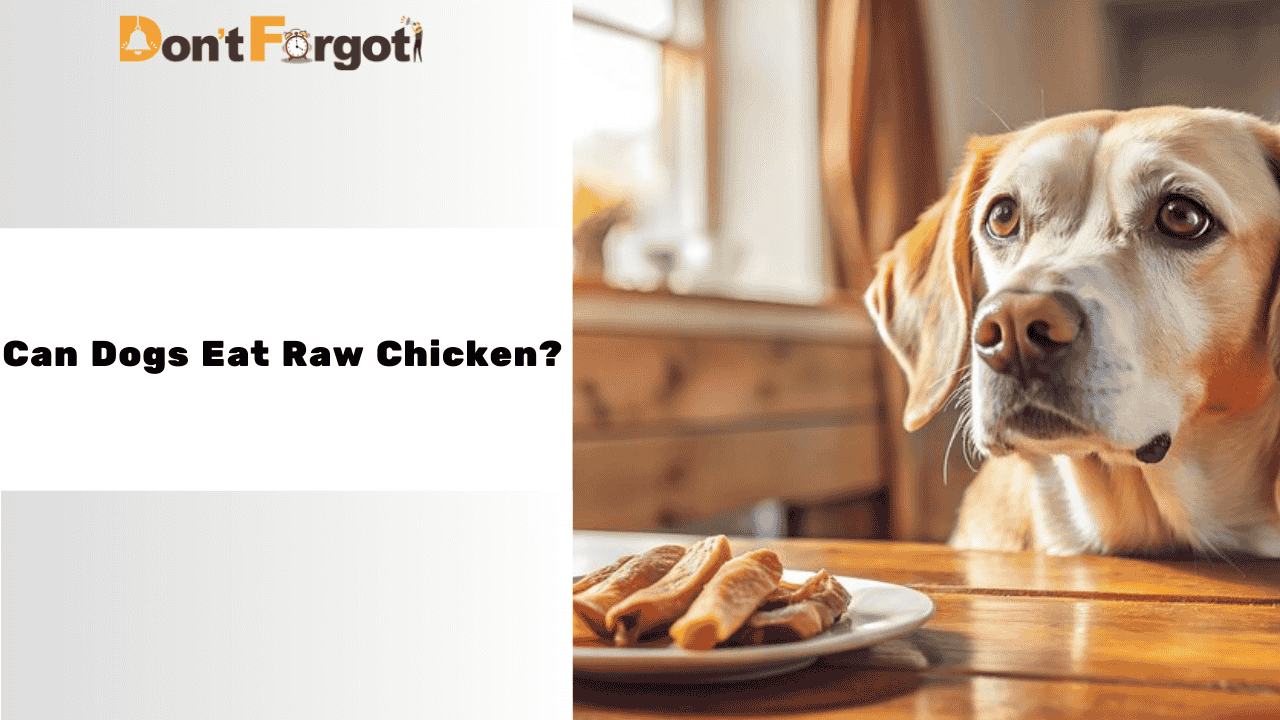Many dog owners wonder, can dogs eat raw chicken safely? Raw chicken is often promoted as a natural part of a dog’s diet, promising benefits like improved digestion and a healthier coat. However, feeding raw chicken to dogs has risks, such as bacterial infections and choking hazards. At the same time, some advocate for the ancestral benefits of a dog and raw meat diet; weighing these benefits against potential dangers is essential.
Before making the switch, understanding the risks of feeding dogs raw chicken and safe handling practices can help you make the best choice for your furry companion’s health.
Can Dogs Eat Raw Chicken?
Yes, dogs can eat raw chicken, which offers a natural source of protein and essential nutrients that align with their ancestral diet. Many dog owners find that a raw diet can contribute to healthier skin, a shinier coat, and improved energy levels.
However, feeding raw chicken has risks, mainly due to the potential for bacterial contamination, such as Salmonella and Campylobacter, which can harm both pets and humans. This is why ensuring fresh chicken is handled with care is crucial.
Purchasing raw dog food from trusted sources, like Natures Menu, can help minimize these risks by providing high-quality ingredients specifically prepared for pets. Additionally, consulting with your veterinarian before making dietary changes can help you decide if raw chicken is the best option for your dog’s health and dietary needs.
Is Raw Chicken Safe for Dogs?
When it comes to feeding raw chicken for dogs, opinions are divided. Advocates believe a raw diet is closer to what canines eat in the wild. However, feeding dogs raw chicken may expose them to harmful bacteria like Salmonella and E. coli. These pathogens can cause significant health issues, ranging from mild digestive upset to severe infection.
Risks of Feeding Dogs Raw Chicken
The risks of feeding dogs raw chicken are considerable. Unlike humans, dogs have stronger stomach acids that help kill off many bacteria, but this doesn’t mean they’re immune. Dogs can still get sick from contaminated meat, leading to symptoms like vomiting, diarrhoea, and dehydration. More seriously, these pathogens can also be spread to humans so that raw chicken can pose a risk to everyone in the household.
Furthermore, raw chicken bones present a choking hazard and can splinter, causing damage to a dog’s mouth, throat, or intestines. Although many dogs have no trouble eating raw chicken, these risks should be considered carefully.
Benefits of Raw Chicken for Dogs
On the flip side, some pet owners and veterinarians advocate for the benefits of raw chicken for dogs. Proponents argue that raw chicken contains more natural nutrients compared to cooked meat. The uncooked flesh retains amino acids, enzymes, and other nutrients that can improve a dog’s coat, boost energy levels, and support overall health.
Furthermore, raw chicken can be less processed than many commercial dog foods, potentially reducing food sensitivities.
Dogs and Raw Meat Diet
The dog and raw meat diet movement has gained traction in recent years. Many believe feeding raw chicken and other meats aligns more closely with a dog’s natural diet. However, it’s essential to ensure a balanced approach.
Feeding exclusively raw chicken may result in nutritional imbalances and a lack of essential vitamins and minerals dogs need. Therefore, consulting with a veterinarian can help you create a safe and balanced meal plan for your dog if you consider a raw diet.
Can Puppies Eat Raw Chicken?
Many pet owners wonder, can puppies eat raw chicken? Puppies have delicate digestive systems that may not handle raw meat as efficiently as adult dogs. While some breeders and owners advocate for introducing raw food early, others suggest waiting until the puppy’s immune system is more developed. Always consult a vet before making significant dietary changes, especially with young puppies.
Best Raw Food Options for Dogs
If you decide to feed your dog raw, it’s wise to consider the best raw food options for dogs beyond just chicken. Incorporating a variety of meats like beef, lamb, and fish can ensure a more balanced nutrient profile. Mixing raw vegetables and fruits can also provide essential vitamins and fibre, aiding digestion and overall health. Choosing high-quality meats from reputable sources also reduces the risk of bacterial contamination.
FAQs
Is it safe to feed dogs raw chicken regularly?
Feeding raw chicken regularly can carry risks due to potential bacterial contamination. While some dogs may thrive on a raw diet, others may be more sensitive. Regular veterinary check-ups are crucial to monitor your dog’s health on a raw diet.
Are there any symptoms to watch for if my dog eats raw chicken?
Yes, symptoms like vomiting, diarrhoea, lethargy, and loss of appetite may indicate that your dog is having trouble digesting raw chicken or has contracted a bacterial infection. If these symptoms continue, it’s essential to consult a veterinarian for further evaluation and care.
Can raw chicken improve my dog’s coat and skin?
Some dog owners report that raw chicken, due to its preserved nutrients, can lead to a shinier coat and healthier skin. Nonetheless, it’s essential to consider these benefits alongside the potential risks. A balanced diet with the right supplements may also improve coat health.
Should I consult a veterinarian before switching my dog to a raw meat diet?
Absolutely. Consulting a veterinarian is essential before making any major dietary changes for your dog. They can help create a balanced diet plan that considers your dog’s needs, reducing the risks of feeding raw chicken.
Conclusion
In conclusion, the decision to feed raw chicken for dogs is personal, with strong opinions on both sides. By understanding the risks of feeding dogs raw chicken, you can make an informed choice that suits your pet’s needs. If you decide to proceed, consider diversifying with other best raw food options for dogs to ensure a balanced diet. Ultimately, discussing with your veterinarian will provide the best guidance for your dog’s health.

